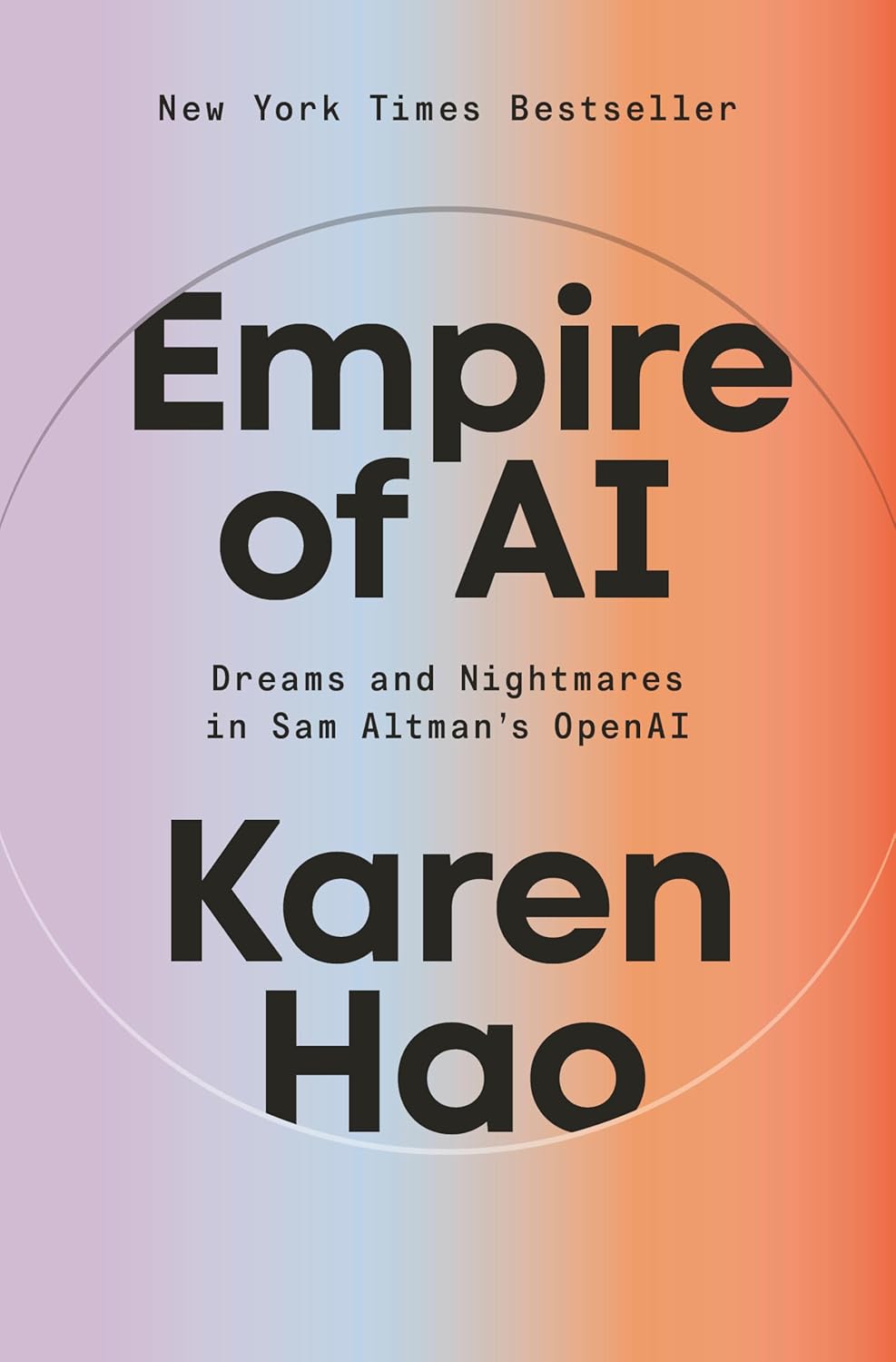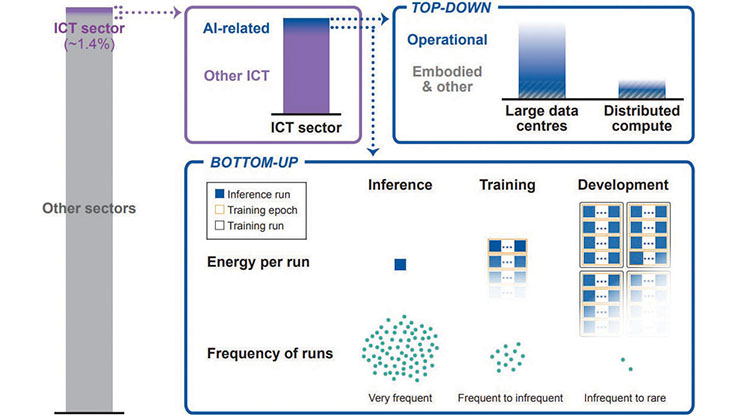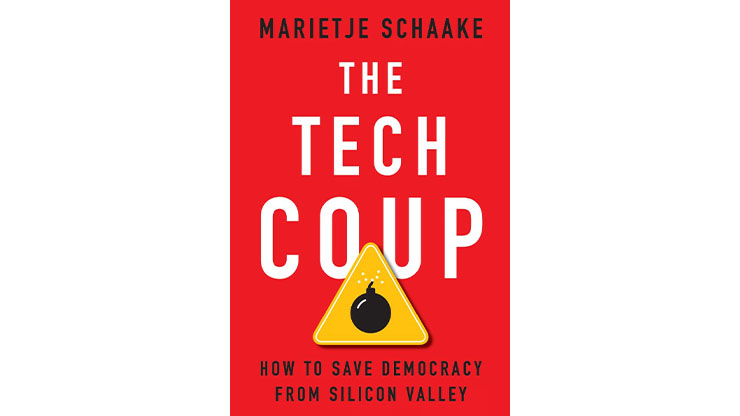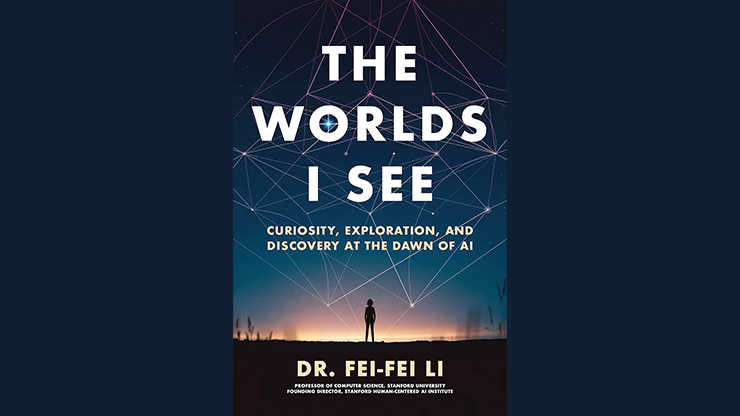OpenAI: Extraordinary Accomplishments, but at What Cost?
Empire of AI: Dreams and Nightmares in Sam Altman’s OpenAI. By Karen Hao. Penguin Press, New York, NY: May 2025. 496 pages, $32.00.

In February 2020, MIT Technology Review published an article by investigative reporter Karen Hao titled “The Messy, Secretive Reality Behind OpenAI’s Bid to Save the World” [1]. The subhead was “The AI moonshot was founded in the spirit of transparency. This is the inside story of how competitive pressure eroded that idealism.”
When OpenAI was founded in December 2015, many people considered it a bright new hope for artificial intelligence (AI) research. The company was a nonprofit whose “primary fiduciary duty” was to humanity as a whole. Above all, as the name indicated, OpenAI would be open. The initial announcement overflowed with idealistic promises, noting that “It’ll be important to have a leading research institution which can prioritize a good outcome for all over its own self-interest…Researchers will be strongly encouraged to publish their work, whether as papers, blog posts, or code, and our patents (if any) will be shared with the world.”
OpenAI began with $1 billion, which seemed like a lot of money at the time. It was founded by Elon Musk, who was still widely admired 10 years ago, and Sam Altman, a relatively unfamiliar figure outside the world of high-tech venture capitalists. Ilya Sutskever—a rising young star who had successfully used deep learning for visual recognition (in collaboration with Alex Krizhevsky and Geoffrey Hinton)—was serving as research director. Peter Thiel, known for his right-wing pronouncements and involvement with the high-tech surveillance company Palantir, was a major initial investor.
OpenAI delivered surprisingly powerful AI products with astonishing speed. With equally astonishing speed, it abandoned its initial idealism. It quickly became clear that the initial $1 billion was not enough; OpenAI would need a large regular income to compete with Google DeepMind. The charter, released in March 2018, differed in subtle but important ways from the initial announcement. In particular, it substantially reneged on its earlier promises of openness, ostensibly for safety reasons. In March 2019, OpenAI created a “capped profit” organizational arm and entered into a murky arrangement with Microsoft.
By the time Hao’s article published in 2020, the initial hype and optimism surrounding OpenAI’s public image had faded. Nonetheless, the article was disturbing — particularly Hao’s description of her own experience. She was treated with suspicion as an unwelcome outsider; her interactions with employees were tightly controlled by the communications team, and many of the people with whom she spoke insisted on anonymity for fear of retribution. Different scientific teams worked on projects that were kept secret even within the company. The overall picture was of an organization that was achieving extraordinary successes at the cost of a working environment that was simultaneously messianic, frantic, and paranoid.
Hao has spent the last five years investigating the inner workings of OpenAI, its competition, and its subsequent impact on the outside world. During that time, OpenAI—and its flagship product, ChatGPT—have reached extraordinary heights even as the company’s ethical degradation has sunk to extraordinary depths.
In particular, Altman has grown from a minor player in Hao’s MIT Technology Review article to the chief executive officer and chief spokesman for OpenAI — and one of the most visible and notorious figures in Silicon Valley. In her new book, Empire of AI: Dreams and Nightmares in Sam Altman’s OpenAI, Hao notes that Altman presents as strategically brilliant, charismatic, and profoundly admired by many OpenAI employees, who threatened to resign when Sutskever and three board members attempted to fire him in November 2023. By all reports, Altman comes across as charming and sincere in person. However, Hao finds him to be megalomaniacal, entirely unscrupulous, manipulative, untrustworthy, and a pathological liar. She notes that he tells people—OpenAI employees, investors, and U.S. Senate subcommittees—what they want to hear with no regard for consistency or truth, then later criticizes them, betrays them, and sets them against one another.
The secrecy surrounding OpenAI has deepened to the point that the organization no longer publishes any information about the internal workings of their products. For instance, the entire technical description of GPT-4 in the “GPT-4 Technical Report” [2] consisted of the following three-sentence affront to anyone who is impudent enough to ask questions:
GPT-4 is a Transformer-style model pre-trained to predict the next token in a document, using both publicly available data (such as internet data) and data licensed from third-party providers. The model was then fine-tuned using Reinforcement Learning from Human Feedback (RLHF). Given both the competitive landscape and the safety implications of large-scale models like GPT-4, this report contains no further details about the architecture (including model size), hardware, training compute, dataset construction, training method, or similar [2].
Hao’s account of OpenAI’s explosive growth and tortuous office politics in Empire of AI is deeply researched, caustic, and exhaustive. At particularly dramatic moments—such as the attempted removal of Altman, now known at OpenAI as “the Blip”—it becomes a day-by-day and even hour-by-hour narrative of conspiracies, lies, plots, and backstabbing in the fevered world of sociopathic billionaire technocrats.
Hao also sought out and became acquainted with some of Silicon Valley’s victims around the world (in this part of the book, Google is as much of a villain as OpenAI). Oskarina Veronica Fuentes Anaya—a Venezuelan refugee living in Colombia—and Mophat Okinyi, a poor Kenyan, were hired to annotate dregs of internet content for GPT training data — a job that paid a pittance, came with horrible working conditions, and caused severe psychological problems (OpenAI used middleman companies so that it could deny responsibility). The copper and lithium mines in Chile’s Atacama Desert feed Silicon Valley’s ravenous hunger for computer hardware but cause enormous environmental damage. Immense data centers in drought-stricken Uruguay and elsewhere require vast quantities of potable water for cooling, hugely exacerbating the already severe water shortages in these areas. Local activists with shoestring budgets who oppose these injustices face immensely well-endowed company publicists who convince government officials that all will work out for the best. Meanwhile, the organizations in question assure the world at large that powerful AI will soon solve the problems of climate change, poverty, and the environment.
The empire metaphor that Hao uses in the title of her book is very apt. Powerful tech companies and their leaders do indeed resemble historical empires and empire-builders in many respects, including their insatiable greed for wealth and power, alleged dishonesty and unscrupulousness, conviction that they are ultimately bettering the world, and blindness and lack of concern with any resulting damage.
Empire of AI ends on a more hopeful note. Hao acknowledges that there are better ways to build and use AI, describing a project by linguists Peter-Lucas Jones and Keoni Mahelona—in collaboration with the Maori community—that seeks to preserve the Maori language while maintaining deep respect for and sensitivity to the culture and its norms. Additionally, Hao applauds the global activities of environmental groups and social activists who oppose the destruction that high tech is creating. Personally, I am not sure that her optimism is warranted. While the AI industry could have initially taken other paths, those doors may have shut behind us. Sutskever and Dario Amodei have since left OpenAI to found companies that supposedly focus more heavily on AI safety, but we have yet to see concrete evidence that these corporations will be any better than OpenAI in practice. The corporate and political forces that drive AI in its current form are formidable. Now that the genie is out of the bottle, it will not be easy to put it back.
References
[1] Hao, K. (2020, February 17). The messy, secretive reality behind OpenAI’s bid to save the world. MIT Technology Review. Retrieved from https://www.technologyreview.com/2020/02/17/844721/ai-openai-moonshot-elon-musk-sam-altman-greg-brockman-messy-secretive-reality.
[2] OpenAI, Achiam, J., Adler, S., Agarwal, S., Ahmad, L., Akkaya, I., … Zoph, B. (2023). GPT-4 technical report. Preprint, arXiv:2303.08774.
About the Author
Ernest Davis
Professor, New York University
Ernest Davis is a professor of computer science at New York University's Courant Institute of Mathematical Sciences.
Related Reading
Stay Up-to-Date with Email Alerts
Sign up for our monthly newsletter and emails about other topics of your choosing.






